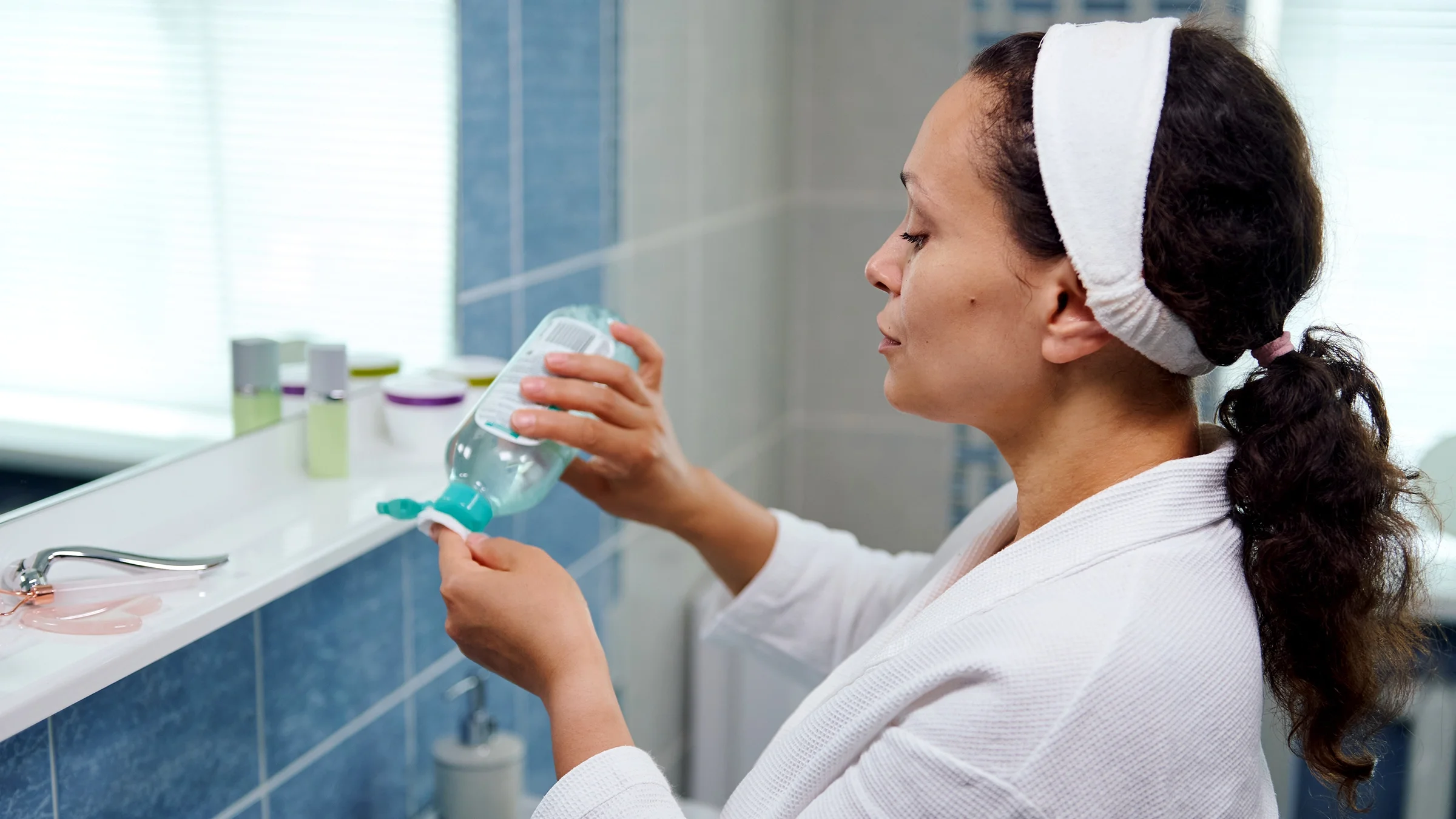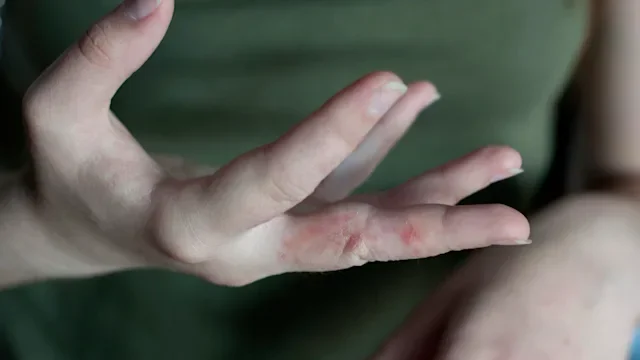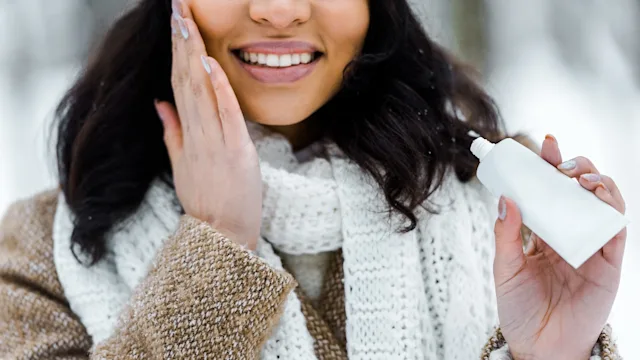Key takeaways:
Micellar water is a skin care product that can be used in different ways, including as a makeup remover and facial cleanser.
Micellar water contains a very low concentration of mild surfactants in purified water, which help lift makeup and dirt.
Micellar water can be used alone or as an additional step alongside other cleansing products, like face wash.
Micellar water dates to France in the early 1900s, where it was reportedly invented as an alternative to the harsh water that was available for bathing and washing. But it wasn’t until the mid-1990s that micellar water went mainstream.
Today, micellar water is available at retail pharmacies, grocery stores, and beauty shops. Despite its increased market availability, many people still have questions about micellar water. If you’ve ever wondered if micellar water could be good for your skin, you’ve come to the right place. Here’s all the information you need to decide whether to add micellar water to your skin care routine.
What’s in micellar water?
Micellar water contains:
Water
A very low concentration of a surfactant detergent (soap) that’s safe for cleaning skin
Glycerol, which helps skin hold onto moisture
Search and compare options
Some brands add additional ingredients that may help cleanse and soothe skin, such as rose water, charcoal, or cucumber extract. Other brands include specialized ingredients like vitamin C.
Micellar water has a very distinctive appearance. When you look at a bottle of micellar water, you'll see tiny bubbles. These are the micelles or soaps. Micelles have a hydrophilic end and a hydrophobic end. The hydrophobic ends of the micelles attract dirt, makeup, and oils when you apply it to your skin. The hydrophilic ends bring along the water to help clean these things away.
Micellar water’s biggest draw is that it can be gentler on skin since it only contains low concentrations of cleansers (soaps). Facial cleansers, on the other hand, contain higher concentrations that can irritate some skin types.
Is micellar water good for all skin types?
Yes, micellar water can be safe for all skin types. There are different formulations of micellar water available to meet different skin type needs and concerns. Micellar water tends to be a good option if you have dry skin because it contains glycerol.
If you have oily skin you may find that using micellar water works best as part of a double cleanse routine in the evening. Usually oil builds up over the course of the day so micellar water may not be enough to fully cleanse your skin. But people with oily skin might find that micellar water works well on its own for morning cleansing, when there’s less oil buildup.
Micellar water may also be safe to use if you have a skin condition. There’s evidence to suggest that people with rosacea may notice less redness if they add micellar water to their skin care routine. People with eczema may be able to use micellar water. But there’s some evidence that even low-strength soaps can trigger skin irritation and eczema flares. If you have eczema, it’s best to test any new skin products on a small area of skin and see if you react to it.
Read more like this
Explore these related articles, suggested for readers like you.
It’s also important to check the ingredients label before purchasing a brand of micellar water, especially if you have sensitive skin, eczema, or rosacea. Many brands add additional ingredients and preservatives that can irritate the skin. Often, it’s these items that are to blame for skin irritation, not the micelles. Some ingredients that can lead to irritation or even allergic reactions include:
Alcohols
Fragrances
Essential oils
Parabens
Do dermatologists recommend micellar water?
Given its ingredient profile, micellar water may be especially beneficial as a facial cleanser for people with dry or sensitive skin, according to Maria Robinson, MD, a board-certified dermatologist and GoodRx freelance editor.
“Micellar water is a very diluted cleanser that can be used to easily and gently cleanse your skin,” Dr. Robinson said. “It’s made up of tiny micelle clusters, which attract and remove dirt and impurities from your skin without stripping it of its natural oils. It can be a great option for dry or sensitive skin.”
Another dermatologist-approved tip: You can use micellar water for cleansing on the go, like after going to the gym. When you don’t have access to running water, like on a long plane flight, micellar water can help keep your skin clean and hydrated.
How to use micellar water
To use micellar water, generously wet a cotton pad with the liquid and sweep across your face using gentle motions to capture makeup, dirt, and impurities. For the area around your eyes, gently press the pad onto the skin without rubbing. Try not to get any micellar water into your eye. If you do get some into your eye, make sure to rinse your eyes out right away.
You don’t need to rinse your face after cleansing with micellar water. In fact, rinsing with plain water may remove the moisturizing benefits of micellar water. You also don’t need to shake the bottle before using it. The micelles will stay dissolved on their own. But shaking or agitating the bottle won’t damage the micelles either.
Micellar water should be the first step of your skin care routine if you’re using it to remove makeup or wash your face (either alone or as the first step of a double cleanse). You can then move on to your next skin care steps like serums, moisturizers, and sunscreen.
The bottom line
Micellar water has been around for decades but has surged in popularity in recent years. This is thanks in large part to the variety of formulations for different skin types. They’re widely available in retail stores at a reasonable cost.
As with many skin care products, there’s a “right way” to use micellar water: soak a cotton pad, and gently sweep or press on your skin.
Micellar water may become your staple facial cleanser while traveling or going to the gym. Or it may stand in for your facial cleanser on nights when you’re too tired to do much else. You can also use it as a makeup remover. However it’s used, micellar water is gentle, effective, and another great option to consider adding to your skin care routine.

Why trust our experts?


References
Day, K. (2017). Sensitive skin compatibility of micellar water. Journal of the American Academy of Dermatology.
Guertler, A. et al. (2020). Efficacy and safety results of micellar water, cream and serum for rosacea in comparison to a control group. Journal of Cosmetic Dermatology.
Shaughnessy, C. et al. (2014). Cutaneous delayed-type hypersensitivity in patients with atopic dermatitis: Reactivity to surfactants. Journal of the American Academy of Dermatology.
















